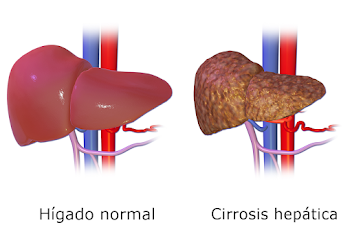Alcohol-related liver disease (ARLD)
Alcohol-related liver disease (ARLD) is a term used to describe the liver damage that occurs due to excessive alcohol consumption. The liver plays a crucial role in metabolizing alcohol, but excessive and prolonged drinking can lead to various liver disorders, ranging from fatty liver to more severe conditions such as alcoholic hepatitis and cirrhosis.
Here are some key stages and conditions associated with alcohol-related liver disease:
1. **Fatty Liver Disease (Alcoholic Steatosis):** This is the early stage of ARLD, characterized by the accumulation of fat in liver cells. It is usually reversible if alcohol consumption is reduced or stopped.
2. **Alcoholic Hepatitis:** This is an inflammation of the liver caused by alcohol abuse. Symptoms may include jaundice (yellowing of the skin and eyes), abdominal pain, nausea, vomiting, and fever. Alcoholic hepatitis can be severe and life-threatening.
3. **Alcoholic Cirrhosis:** Cirrhosis is an advanced stage of liver scarring and damage. It is irreversible, and healthy liver tissue is replaced by scar tissue. Symptoms can include fatigue, weakness, easy bruising, swelling in the legs and abdomen, and confusion. Cirrhosis increases the risk of liver failure and liver cancer.
4. **Liver Failure:** In severe cases, ARLD can lead to liver failure, where the liver loses its ability to function properly. Liver failure is a life-threatening condition that may require a liver transplant.
Risk factors for ARLD include the amount and duration of alcohol consumption, genetic factors, and other coexisting liver diseases. It's important to note that not everyone who drinks heavily develops ARLD, as individual susceptibility varies.
Prevention and management strategies include:
- **Abstinence or moderation:** The most effective way to prevent ARLD is to limit or eliminate alcohol consumption.
- **Regular medical check-ups:** Monitoring liver health through routine check-ups can help detect early signs of liver damage.
- **Healthy lifestyle:** Maintaining a healthy diet, exercising regularly, and avoiding other risk factors for liver disease can contribute to overall liver health.
If someone is experiencing symptoms related to liver disease or suspects ARLD, it is crucial to seek medical advice promptly. Early intervention can improve outcomes and prevent the progression of liver damage. Treatment may involve lifestyle changes, medications, and, in severe cases, liver transplantation.
Alcohol-related liver disease (ARLD) Symptoms
Alcohol-related liver disease (ARLD) encompasses a spectrum of liver disorders caused by excessive and prolonged alcohol consumption. The main types of ARLD include fatty liver disease (alcoholic steatosis), alcoholic hepatitis, and alcoholic cirrhosis. Here are the types and their associated symptoms:
1. **Fatty Liver Disease (Alcoholic Steatosis):**
- **Symptoms:** Often asymptomatic in the early stages, but may include fatigue and discomfort in the upper right abdomen.
- **Diagnostic features:** Characterized by the accumulation of fat in liver cells, which is reversible if alcohol consumption is reduced.
2. **Alcoholic Hepatitis:**
- **Symptoms:**
- Jaundice (yellowing of the skin and eyes)
- Abdominal pain and tenderness
- Nausea and vomiting
- Loss of appetite
- Fever
- Fatigue and weakness
- Enlarged and tender liver
- Fluid retention (edema) and swelling
- **Diagnostic features:** Inflammation of the liver, often indicated by elevated liver enzymes and other blood markers.
3. **Alcoholic Cirrhosis:**
- **Symptoms:**
- Fatigue and weakness
- Easy bruising and bleeding
- Swelling in the legs and abdomen (edema and ascites)
- Weight loss
- Confusion and difficulty concentrating
- Spider-like blood vessels on the skin (spider angiomas)
- **Diagnostic features:** Advanced scarring of the liver tissue, irreversible damage, and disruption of normal liver function.
It's important to note that the progression of ARLD is not always linear, and individuals may not experience symptoms until the disease has advanced. Some people with ARLD may only discover the condition during routine medical check-ups or when complications arise.
If someone is experiencing symptoms suggestive of ARLD or has a history of heavy alcohol consumption, it is crucial to seek medical attention. Early detection and intervention can improve outcomes and prevent further liver damage.
Individuals with ARLD may also be at an increased risk of developing liver cancer. Regular medical monitoring and lifestyle changes, including abstinence from alcohol, are crucial components of managing ARLD and preventing complications.



